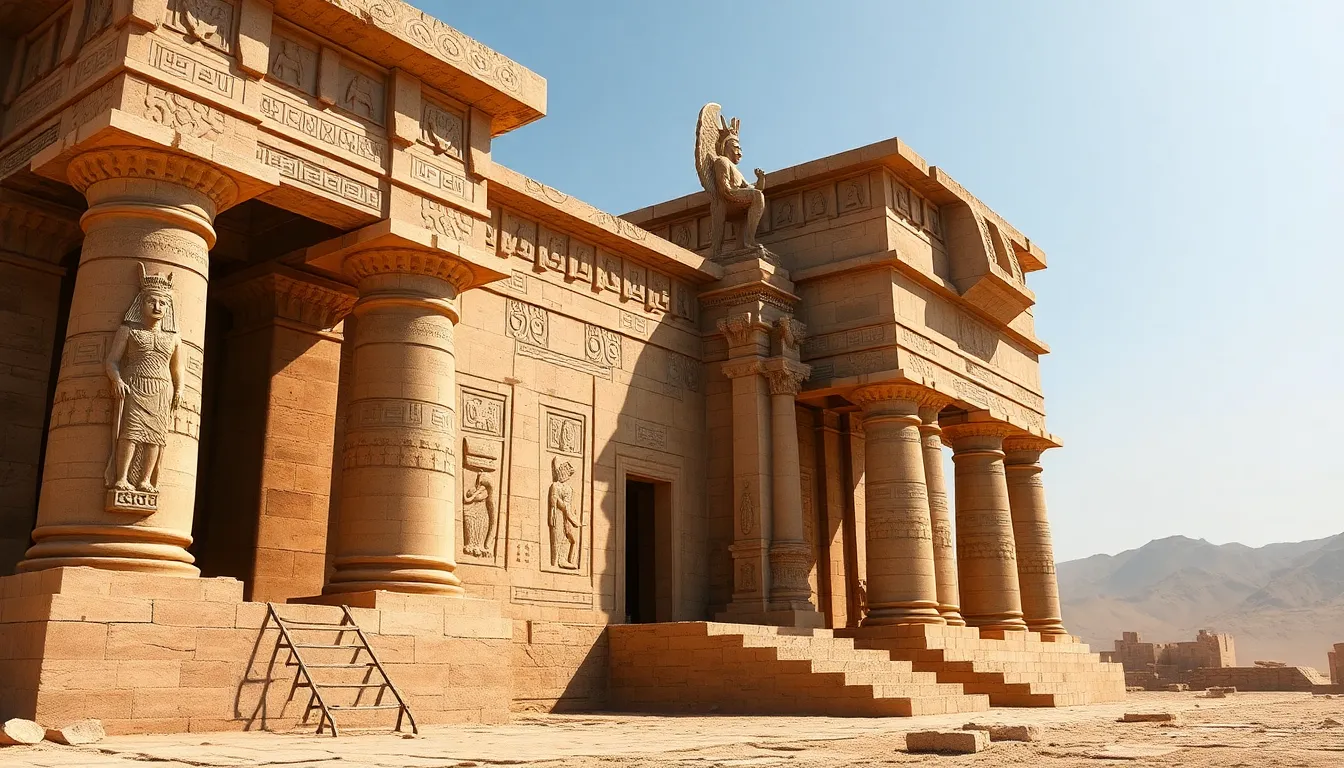The Sacred Sites: Temples Dedicated to Egyptian Deities
I. Introduction
Ancient Egyptian religion was a complex system of beliefs that encompassed a vast array of deities, rituals, and practices. Central to this religious framework were the temples, which served as the physical and spiritual homes for the gods. These sacred sites were not merely places of worship but were also vital to the socio-economic and political life of ancient Egypt. Temples played a crucial role in the worship of deities, acting as centers for rituals, offerings, and community gatherings.
II. Historical Context of Egyptian Temples
The construction of temples in ancient Egypt spans several millennia, beginning with the Early Dynastic Period around 3100 BCE and continuing well into the Greco-Roman era. Throughout this timeline, temples evolved in size, complexity, and purpose.
- Early Dynastic Period (c. 3100 – 2686 BCE): Initial small-scale temples dedicated to local deities.
- Old Kingdom (c. 2686 – 2181 BCE): Significant development of mortuary temples for pharaohs.
- Middle Kingdom (c. 2055 – 1650 BCE): Expansion of temple complexes and the introduction of more elaborate rituals.
- New Kingdom (c. 1550 – 1070 BCE): Peak of temple construction, with grand complexes dedicated to major gods.
Pharaohs and priests were instrumental in temple development, with pharaohs often commissioning grand structures to assert their divine rule and priests overseeing the rituals that took place within these sacred spaces.
III. Major Temples and Their Deities
Several temples stand out in the landscape of ancient Egyptian religion, each dedicated to specific deities and reflecting unique architectural styles.
A. Karnak Temple Complex: Amun-Ra
The Karnak Temple Complex, located in Luxor, is one of the largest religious complexes in the world. Dedicated primarily to Amun-Ra, the king of the gods, it features a vast array of temples, chapels, and pylons.
B. Luxor Temple: Amun and Mut
Adjacent to the Karnak Temple, Luxor Temple is dedicated to the Theban triad of Amun, his wife Mut, and their son Khonsu. This temple was the center of the annual Opet Festival, celebrating the divine connection between the pharaoh and the gods.
C. Temple of Hatshepsut: Amun-Ra and Hathor
Built for the female pharaoh Hatshepsut, this mortuary temple near Deir el-Bahari honors Amun-Ra and Hathor. Its unique terraced architecture and stunning reliefs depict Hatshepsut’s divine birth and her successful expeditions.
D. Temple of Edfu: Horus
The Temple of Edfu is one of the best-preserved temples in Egypt, dedicated to Horus, the falcon-headed god. The temple’s construction began in 237 BCE and showcases intricate carvings that narrate the myth of Horus’s battle against Seth.
IV. Architectural Features of Egyptian Temples
Egyptian temples are renowned for their distinct architectural features that reflect their religious significance and the beliefs of the time.
- Pylons: Monumental gateways that marked the entrance to temples, often adorned with reliefs depicting the pharaoh’s victories.
- Hypostyle Halls: Large halls filled with columns that supported the roof, creating a grand space for worship and rituals.
- Sanctuaries: The innermost chamber of the temple, housing the statue of the deity and accessible only to the high priests.
The symbolism in temple architecture and decoration often included representations of the gods, pharaohs, and significant mythological events, reinforcing the relationship between the divine and the earthly realms.
V. Rituals and Worship Practices
Rituals and festivals held at the temples were integral to the ancient Egyptian religious experience. Daily rituals involved:
- Offering of food, incense, and flowers to the deities.
- Processions and prayers led by priests.
- Recitation of sacred texts and hymns.
Major festivals, such as the Opet Festival and the Beautiful Feast of the Valley, involved elaborate celebrations that showcased the unity between the gods and the pharaoh, drawing crowds from all over the region.
VI. Temples as Centers of Economy and Society
Temples were not only religious institutions but also vital economic centers in ancient Egypt. They managed vast tracts of land, agricultural production, and trade:
- Temples owned large estates that produced crops, which were often used for offerings and sustenance for the priesthood.
- Trade was facilitated through temple networks, allowing for the exchange of goods, including precious metals and textiles.
- Temples served as social hubs where community members gathered for festivals and events, reinforcing social bonds.
VII. Preservation and Modern Significance
Today, many ancient temples exist in various states of preservation, with ongoing conservation efforts aimed at protecting these historical sites. Temples like Karnak and Luxor attract millions of tourists each year, playing a crucial role in Egypt’s economy and cultural heritage.
These sites are also significant in the field of Egyptology, offering insights into ancient beliefs, architectural practices, and the daily lives of the Egyptians.
VIII. Conclusion
The legacy of Egyptian temples and their deities continues to captivate people worldwide. These magnificent structures represent not only the architectural ingenuity of ancient Egypt but also the profound spirituality and cultural richness of its civilization. The fascination with ancient Egyptian spirituality and architecture endures, as these sacred sites invite exploration and reflection on the mysteries of the past.




